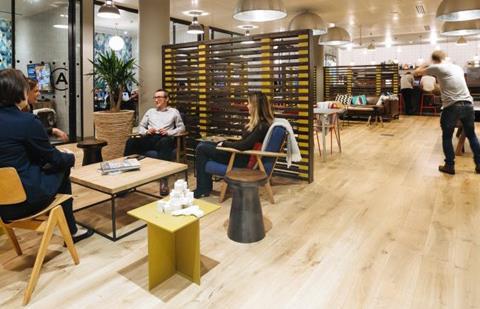A new flexible office solution has arrived: the hybrid model. Finally, a solution that allows growing businesses to take the space they need on terms that suit their growth plans.

What we need is the space for this new model to expand.
I’m not talking about space for start-ups. Cities are just about providing enough spaces for entrepreneurs and teams in their infancy.
I’m talking about established businesses, perhaps three to five years old, looking for 50 to 100 desks or more. They are still rapidly scaling so don’t want to take a traditional five- or 10-year lease, but they’ve moved beyond taking a few desks in a co-working space.
The hybrid model, as we at Kontor call it, merges the best elements of different solutions.
A company can take its own entire floor in a building, and even dictate the layout and fit-out, while having the space managed for it.
At first glance this may appear more expensive than taking an individual lease, but it is much less prohibitive for a business than doing everything itself - undertaking the fit-out, paying a rent deposit and waiting for internet to be installed, for example, all take their toll. And there’s that all-important flexibility.

Kontor client QuantiQ is an excellent example of the hybrid model in practice. QuantiQ signed for a minimum term of two years in a serviced office for its 110 staff.
The space provider sat down with the business and designed a floorplan to accommodate its requirements. The fit-out was amortised over the rental period, which still works out cheaper than the occupier doing it itself. This is the ultimate managed solution.
Everyone - landlord, operator, tenant - wins from the situation
There is a growing trend among managed solutions operators to offer this kind of space as they look to capitalise on the change among occupiers.
Operators that have so far only offered co-working desks or offices are looking to offer larger floors or groups of desks, not just to SMEs but to corporates that want spillover space.
Knocking down walls
WeWork, for example, is starting to look at enterprise deals for businesses looking for more than 300 desks. A recent tie-up with Microsoft means that the tech giant’s employees can use its spaces.
WeWork is not going to start knocking down the walls in its existing buildings to provide hybrid spaces because they already have a strong market, but they may underwrite the first two years of rent on a building by signing up a corporate to take a floor.
This can only be good news for landlords - guaranteed rent, a stronger covenant - but there still isn’t enough space for managed solutions providers. At Kontor, we have more than 1m sq ft of open requirements from hybrid space operators right now. When our flexible solutions team looks to find a space for a client wanting a bigger office, all the providers are sold out.

To landlords this is an opportunity either way - they could look to run such space themselves or take on an operator that can run it for them. In the latter case, there’s no need for a landlord to take on the uncertainty and cost of running the space. If they lease to an operator with the skills to manage the space under a 20-year lease or management agreement, then traditional valuation models don’t need to be affected.
Is the hybrid model the solution for growing businesses? It could be, as everyone - landlord, operator, tenant - wins from the situation. Certainly, from where we sit at Kontor the market appears to be screaming out for more space like this. There’s no doubt that the future looks flexible.






























No comments yet